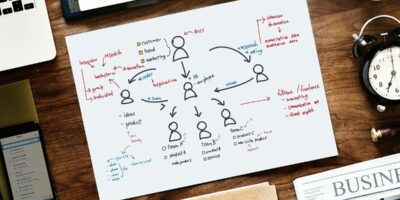As workplaces become more diverse in terms of age, organizations are increasingly encountering the challenge of effectively transitioning roles between generations. From Baby Boomers to Generation Z, each generation brings its unique perspectives, values, and work styles. To foster effective collaboration and maintain productivity, it’s essential to implement strategies that facilitate smooth transitions. This article explores several key strategies organizations can adopt to bridge the generational gap effectively.
Understanding Generational Differences
Before implementing strategies, it’s crucial to understand the distinctive traits associated with different generations:
- Baby Boomers (born 1946-1964): Typically value loyalty, hard work, and face-to-face communication. They may resist rapid changes, especially in technology.
- Generation X (born 1965-1980): Known for their independence and adaptability, Gen Xers often prefer a balanced work-life dynamic and can navigate both traditional and digital tools easily.
- Millennials (born 1981-1996): Educated and tech-savvy, Millennials seek meaningful work experiences and value flexibility, collaboration, and continuous learning.
- Generation Z (born 1997-2012): The digital natives, Gen Zers are comfortable with technology and value transparency, inclusivity, and social responsibility.
Understanding these differences is the first step in creating an inclusive work environment that respects all viewpoints.
1. Foster Open Communication
Effective communication is crucial in bridging generational gaps. Organizations should promote an open dialogue where employees can share their perspectives and experiences. This can be achieved through:
- Regular Feedback Sessions: Establish feedback loops that encourage employees of all generations to express their thoughts on processes and collaboration.
- Mentorship Programs: Pair employees from different generations for knowledge transfer, fostering relationships that aid role transitions.
2. Embrace Technology
Technological literacy varies greatly among generations. While younger employees might be adept with the latest tools, older generations might require additional support. Organizations can bridge this gap through:
- Training and Workshops: Offer training sessions that familiarize all employees with new technologies. Tailor these sessions to accommodate varying levels of tech proficiency.
- User-Friendly Tools: Invest in tools that are intuitive and easy to navigate, minimizing the learning curve for all employees.
3. Encourage Collaboration and Team Integration
Creating opportunities for collaboration across generations can lead to innovative solutions and foster respect for diverse perspectives. This can be implemented by:
- Cross-Generational Teams: Form teams comprising members from different generations to work on projects, encouraging knowledge sharing and skill development.
- Team-Building Activities: Organize activities that promote teamwork and understanding, focusing on strengths and contributions from each generation.
4. Recognize and Celebrate Diversity
Celebrating the strengths and contributions of each generation can create a sense of belonging and appreciation. Organizations should consider:
- Recognition Programs: Implement programs that highlight the achievements of employees from all generations, emphasizing contributions that enhance workplace culture and productivity.
- Diverse Representation in Leadership: Ensure leadership roles reflect generational diversity, allowing a broader range of perspectives in decision-making processes.
5. Offer Flexibility and Autonomy
Different generations have varying expectations regarding work environments. Flexibility can enhance satisfaction and performance, leading to easier transitions. Strategies can include:
- Flexible Work Arrangements: Provide options for remote work and flexible hours that accommodate different lifestyles and work preferences.
- Autonomy in Role Fulfillment: Allow employees the freedom to approach their tasks in ways that align with their strengths and preferences, promoting ownership and motivation.
6. Continuous Learning and Development
A culture that prioritizes learning ensures that all employees can grow, regardless of their generational background. Promote continuous development through:
- Skill Development Opportunities: Provide regular training sessions, workshops, and access to online learning platforms for employees of all ages.
- Succession Planning: Establish programs that prepare younger generations for leadership roles, while also valuing the expertise of veteran employees.
Conclusion
Bridging the generational gap requires conscious effort and a commitment to fostering an inclusive workplace culture. By employing strategies that promote open communication, technological proficiency, collaboration, diversity, flexibility, and continuous learning, organizations can create an environment where every generation feels valued and engaged. Successful role transitions not only enhance productivity but also foster a culture of mutual respect and understanding, paving the way for a cohesive and resilient workforce.










